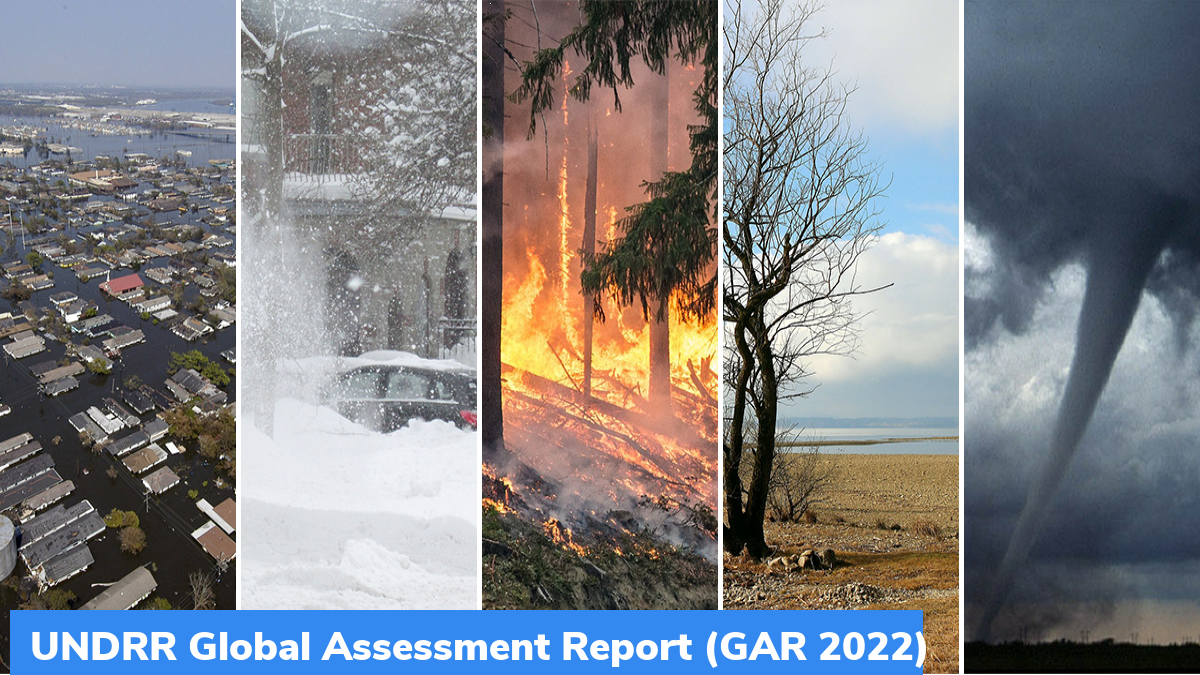UNDRR Global Assessment Report (GAR 2022)
United Nations Office for Disaster Risk Reduction (UNDRR) has released the Global Assessment Report (GAR 2022). According to this report, by 2030, the planet will be facing around 560 disasters annually.
Overview:
- Over the last 20 years, Earth has been experiencing 350 to 500 medium- to large-scale disasters annually. This is five times higher than what was reported in the previous three decades.
- This rapid rise in the frequency of disasters can be attributed to inadequate risk management and climate change.
- This report has been released by the UNDRR ahead of the Global Platform for Disaster Risk Reduction in May 2022.
- Poor risk management systems and governance are underestimating the true global risk which is putting all socio-economic gains in danger.
Increase of poverty burden
The frequent disasters will be adding to the world’s poverty burden. By 2030, an additional 37.6 million people have been estimated to be living in conditions described as extreme poverty due to the impacts caused by climate change and other disasters. A worst-case scenario of disasters and climate change will be pushing an additional 100.7 million into poverty by the year 2030. The poorest are the most vulnerable and they will face the brunt of the disasters. A majority of countries facing high disaster risk are also among the nations that have the highest share of the population that are living below the national poverty line. These include India, Bangladesh, Philippines, Indonesia, Myanmar, Vietnam, and Pakistan from the Asia-Pacific region. Around 90 percent of the countries facing high risk are the lower and middle-income countries having an average national poverty rate of 34 percent. The poor are the ones who are affected the most as they have to depend on outdoor work like agriculture or rely on natural capital, both of which are affected by climate change. Without adequate financial means to adapt to these changes, the poorest are the most vulnerable.
Vulnerability of developing nations
The economic loss annually due to disasters has more than doubled in the past three decades. It increased to more than USD 170 billion in the 2010s from around USD 70 billion in the 1990s. Between 1980 to 2018, only 40 percent of all disaster-related losses were insured. Once again this shows the inequality between the developing and developed nations. Disaster-related insurance is mostly concentrated in the richer countries and insurance coverage in the emerging and developing economies is below 10 percent and sometimes around zero, despite them facing the highest brunt from such disasters.
The average cost of natural disasters
Over the last decade, the average cost of natural disasters has been USD 170 billion per year. The lower-middle-income and the low-income economies lose, on average, one percent of national GDP due to disasters every year whereas the developed nations lose only 0.1 to 0.2 percent. The greatest economic loss share is borne by the countries in the Asia and Pacific region, amounting to 1.6 percent of their GDP. Africa comes second with 0.6 percent of GDP.
Safeguarding and building the future
Financial, developmental, governmental, and risk and insurance management sectors, can stop and safeguard the future from the rising risks. Insurance is a key tool that must be used for building back from the various disasters thus it is very important to adopt climate emergencies by estimating the losses being faced due to disaster losses and insuring them.
Month: Current Affairs - April, 2022
Category: Reports & Indexes Current Affairs


